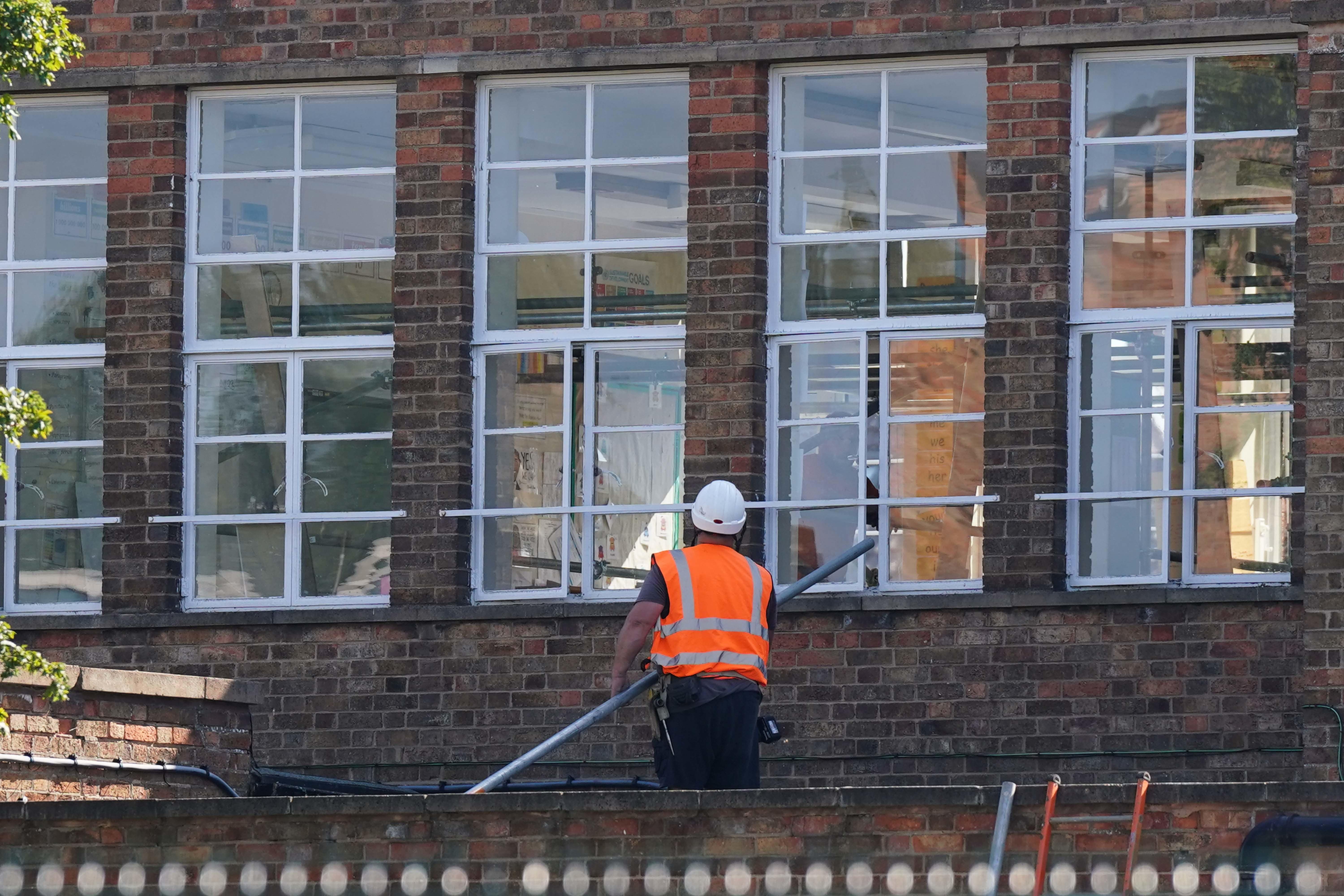More than 40 more schools and colleges found to have collapse-risk concrete
Overall, 214 education settings in England have been confirmed as having Raac as of October 16.

Your support helps us to tell the story
From reproductive rights to climate change to Big Tech, The Independent is on the ground when the story is developing. Whether it's investigating the financials of Elon Musk's pro-Trump PAC or producing our latest documentary, 'The A Word', which shines a light on the American women fighting for reproductive rights, we know how important it is to parse out the facts from the messaging.
At such a critical moment in US history, we need reporters on the ground. Your donation allows us to keep sending journalists to speak to both sides of the story.
The Independent is trusted by Americans across the entire political spectrum. And unlike many other quality news outlets, we choose not to lock Americans out of our reporting and analysis with paywalls. We believe quality journalism should be available to everyone, paid for by those who can afford it.
Your support makes all the difference.The number of education settings in England where collapse-risk concrete has been found has risen, the Department for Education (DfE) has said.
Another 43 schools and colleges have been identified as having reinforced autoclaved aerated concrete (Raac) on site.
Overall, 214 education settings in England have been confirmed with Raac as of October 16.
In an indication of the wider scale of the problem across public buildings, a further 18 hospitals have been identified as having Raac.
Education unions criticised the delay in publishing the school figures and expressed concerns about the lack of a clear timeline for when work will be completed.
The National Association of Head Teachers (NAHT) said many schools are “still waiting” for temporary classrooms and buildings to be put in place and that plans for rebuilding are “even more nebulous”.
Essex is the worst hit local authority with 63 schools confirmed with Raac, according to the National Education Union (NEU).
Education Secretary Gillian Keegan said: “Thanks to the hard work of school and college leaders, 202 settings (94%) are providing full time face-to-face education for all pupils.
“Twelve settings have hybrid arrangements in place.
“This may involve some remote learning on some days as not all pupils can currently receive full-time face-to-face education.
“There are no education settings with confirmed Raac where all pupils are in full-time remote learning.”
I want to reassure pupils, parents and staff that this Government is doing whatever it takes to support our schools and colleges in responding to Raac and minimise disruption to education
Last year, the DfE issued a questionnaire to responsible bodies for all schools in England to ask them to identify whether they suspected they had Raac.
Responsible bodies have submitted responses to the questionnaire for 99.9% of schools and colleges with blocks built in the target era, Ms Keegan said.
She added that the DfE is in contact with those responsible bodies and education settings to resolve 17 remaining responses to the questionnaire.
“I want to reassure pupils, parents and staff that this Government is doing whatever it takes to support our schools and colleges in responding to Raac and minimise disruption to education,” Ms Keegan said.
Daniel Kebede, NEU general secretary, accused the Government of failing to take the crisis seriously.
He said: “Their reluctance to publish on time speaks volumes, demonstrating that there is a failure at the heart of Government to take seriously the various crises facing education.
“It should not have to fall to the NEU to chase the DfE for information they pledged to regularly provide.”
While ministers have made promises over funding and support for schools, there is no clear timeline for when will work will be completed and there appears to be no end in sight to this crisis
Paul Whiteman, NAHT general secretary, said the rise in the number of affected schools “comes as no surprise”.
“While ministers have made promises over funding and support for schools, there is no clear timeline for when will work will be completed and there appears to be no end in sight to this crisis,” he said.
“The government must set out clearly when it will provide the longer-term funding our school buildings desperately needed.”
Mr Whiteman added: “Schools are having to repurpose specialist facilities, dining halls, PE rooms, and spaces for after-school provision and wraparound care, which is having a huge impact on communities, provision and on schools’ income.”
The Department for Health and Social Care said there were now 42 hospital sites with confirmed Raac, including 18 additional sites identified since May 2023.
The DHSC said “keeping hospital capacity open while carefully monitoring and mitigating Raac until it can be removed” is “fully in line” with the guidance from the Institution of Structural Engineers.
But shadow health secretary Wes Streeting said: “Now the full extent of Raac in hospitals has been exposed, the Government’s inaction is even more damning.
“The Conservatives must be clear about their plan to fix this crisis. Patients deserve to know if they are at risk from hospitals in need of urgent repairs.”